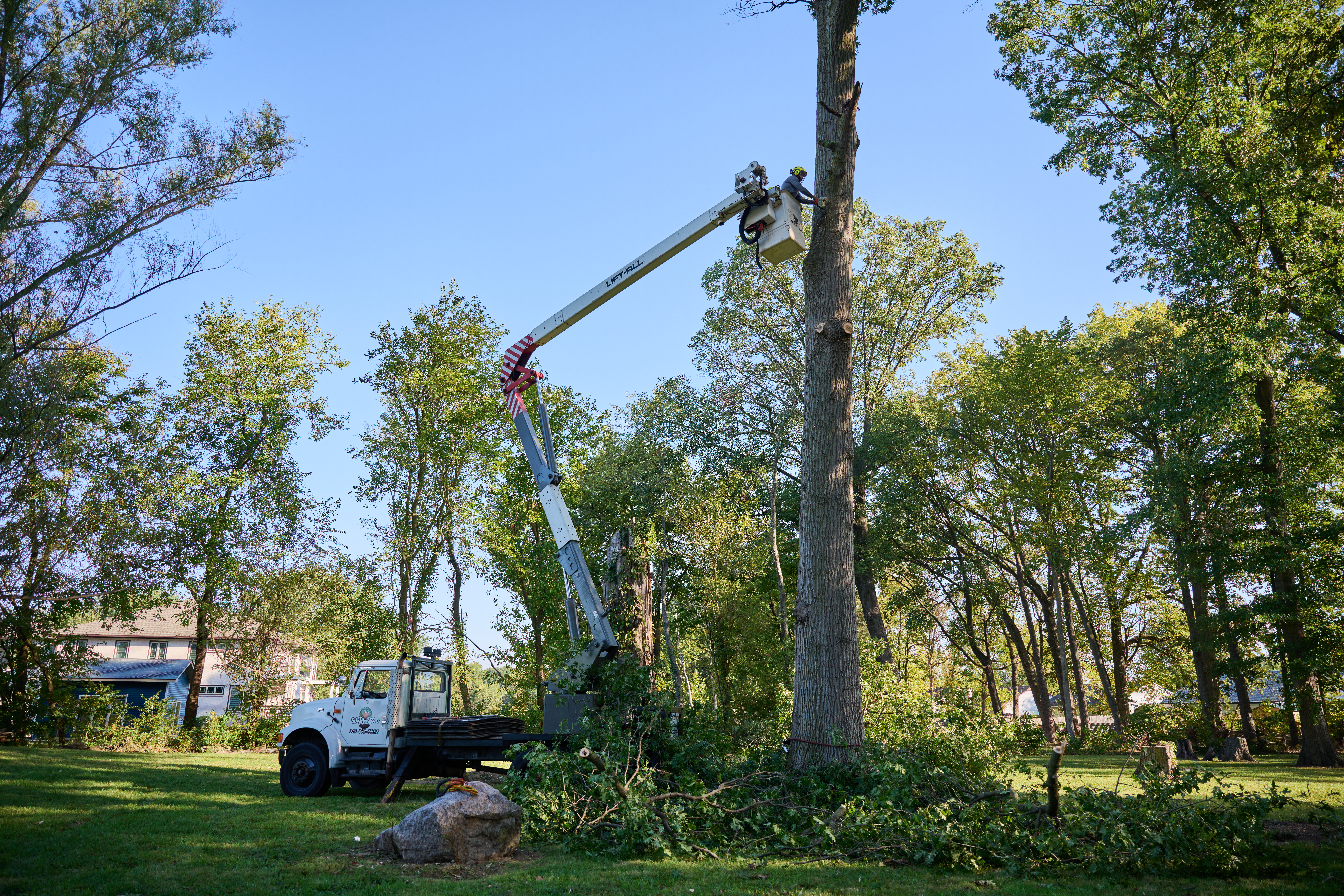
The most significant factor in tree removal costs is the amount of debris. Read on to learn more about the average tree debris removal costs.
Get to the root of this important question


Palm tree roots are only two to three feet deep because their roots grow horizontally, rather than vertically.
Palm trees have fibrous roots—thin, dense roots that grow from a stem and spread out across the topsoil.
The benefits of shallow, fibrous roots include moisture and nutrient retention, increased stability, and erosion prevention.
If you’re the proud owner of a palm tree (or thinking about becoming one), it’s crucial to know the depth of palm tree roots. Why? Because a root system is the anchor of a tree, fortifying it to stand up against environmental stressors.
Understanding how your palm tree grows will help you properly care for it. We’ll unearth the important facts about palm tree roots in this brief article.

Surprisingly, not that deep! While the average mature palm tree stands between 30 and 50 feet in height, the root system of some species only reaches two to three feet deep. Palm trees have a fibrous root system, which means their roots are shallow and dense.
Palm tree roots grow horizontally, not vertically, stretching out to 100 feet in some species. Shallow root systems spread widely rather than deeply, allowing the palm to thrive despite rough winds and severe weather.
Tree roots grow underground and typically remain unseen. However, they play a vital role in a tree’s growth and overall health. Roots anchor a tree to the ground while absorbing water nutrients from the soil. Amazingly, tree roots also store food in reserves that the tree can access during dormancy.
This network of roots is referred to as a root system, of which there are two main types: taproot and fibrous. While having the same basic function, each root system varies in structure. Taproot systems consist of one primary root that grows downward, with smaller secondary roots growing out of it.
Fibrous roots, on the other hand, don’t have one central root. Instead, several thin roots grow from the tree’s stem. Fibrous roots are typically shallow, forming close to the soil’s surface rather than growing deep into the ground.
Consider a few key ways in which a horizontal root system benefits a palm tree:
Moisture and nutrient retention: As palm roots spread horizontally, they have wider access to nutrients and water that exist along the topsoil.
Increased stability and anchoring: The palm tree’s network of strong horizontal roots allows it to withstand high winds and severe weather. Due to their extremely durable root system, palms often require expert removal by a local stump removal pro.
Ideal for sandy soil: You’ll typically find palm trees in areas with sandy soils that may lack nutrients and moisture. Palm roots can still thrive in less-than-optimal conditions by spanning wider distances to access nutrients.
Erosion prevention: Soil erosion occurs when the top layer of soil is worn away, leading to poor tree health. A palm tree’s root system combats soil erosion by holding the soil in place.
I had Ace Fireplace Services install custom chimney caps for my home, and the results are stunning. They fit like a glove and have added a touch of sophistication to my chimney. I can't recommend their services enough.
Great tree company, very professional and honest. Glad we found them, they had the best pricing
Maple Tree Service should serve as a mentor for other business! Customer service was superior and beyond expectation. Response to request was prompt. The representative was very courteous and proud of the company. Quote was given during initial visit and work date established. A follow up...
We used Unique Hardwood Floor LLC three years ago to work on the floors of a 70 year old home that needed a great deal of work. Some floors needed repairs, some were replaced and others just needed to be refinished. It was a complicated job as they needed to blend the old and the new to...
I play a yearly service fee to get my heat and AC checked out, twice a year. It's awesome. The techs are always great.
Very good service. Will use them again in the future.
The team (Kai and Co.) that handled our move was great! Great attitudes; great service; great care. Please reconsider your policy of no moves to AZ. Weâ??d love to use you again in a few months!
Best service I've received. Prompt, friendly, informative and trusting. Highly recommend.
Amazing. Very professional service and a thorough and well job done.
From average costs to expert advice, get all the answers you need to get your job done.

The most significant factor in tree removal costs is the amount of debris. Read on to learn more about the average tree debris removal costs.

How much does it cost to rent a chainsaw? Whether it’s for cleaning up your yard or cutting firewood, learn what options are available and what you’ll pay.

Tree inspections can ensure your trees stay healthy and safe, preventing costly damage. Learn how much tree inspections cost and what can affect the price.

Discover the answer to what is eating my tree trunk, why it's doing it, and what you can do to eliminate and prevent the insect problem.

Is there something new sprouting on your favorite oak tree? Tree bark fungus identification can help you save your tree from a sneaky enemy.

If your palm tree looks dead, there are several ways to bring it back to life. Our guide will show you what to do with a dead palm tree.